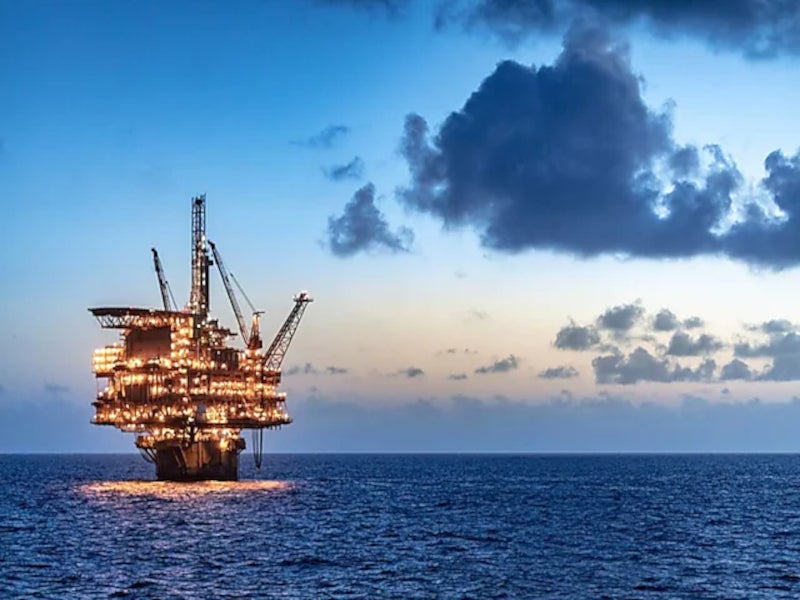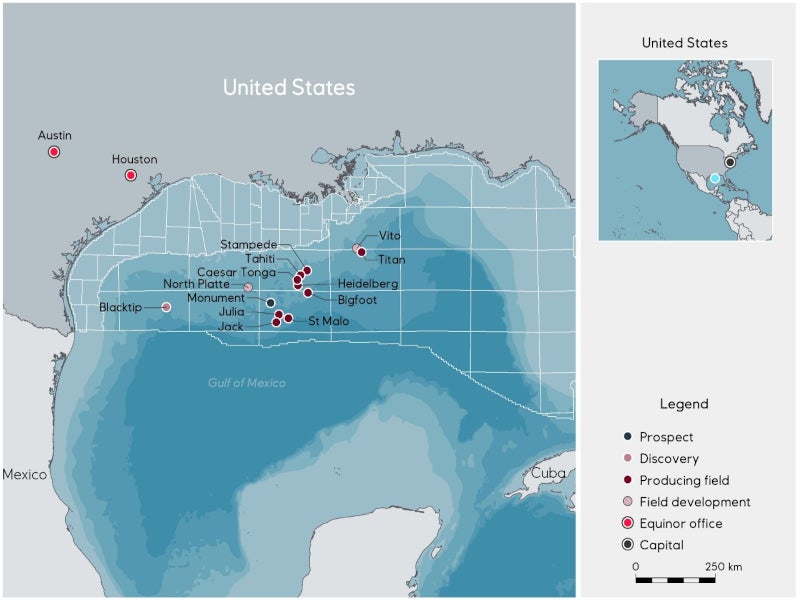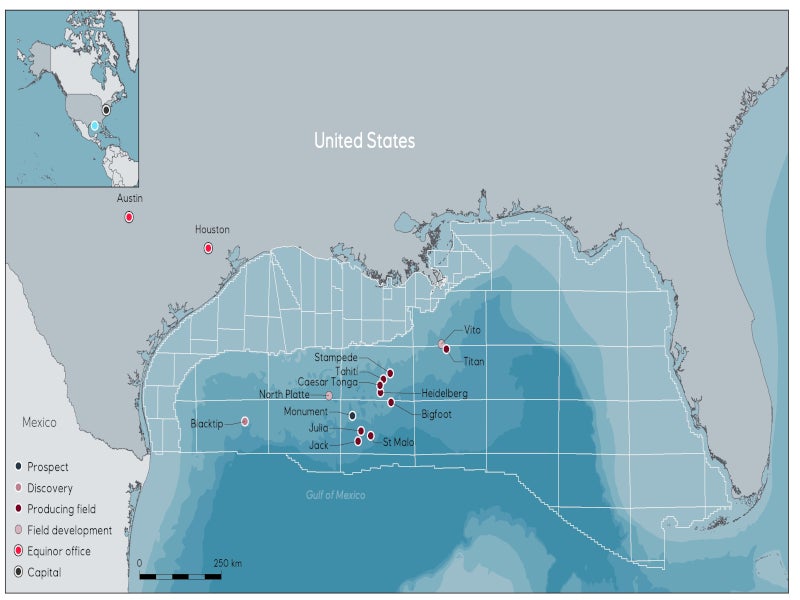Blacktip oil and gas prospect is located at a water depth of 1,900m (6,200ft), about 250 miles (400km) south of Houston in the US Gulf of Mexico.
It is operated by Shell with 52.37% working interest. Shell’s partners in Blacktip include Chevron USA (20%), Equinor Gulf of Mexico (19.12%), and Repsol E&P USA (8.5%).
Blacktip oil and gas prospect location
The Blacktip prospect is located in the Wilcox reservoirs in the thrust belt of the Perdido corridor. The prospect was discovered in the Alaminos Canyon Block 380, approximately 30mi (48.28km) away from the Whale discovery.
Blacktip, along with the nearby Blacktip North and Leopard discoveries operated by Shell, will boost the existing production in the Perdido Corridor of the US Gulf of Mexico.
Discovery details of Blacktip, Leopard, and Blacktip North
The Blacktip discovery well intercepted a net oil pay of more than 400ft (122m) with good reservoir and fluid properties in the prolific Wilcox formation in April 2019.
In May 2021, a significant discovery of more than 600ft (183m) of net oil pay was encountered at multiple levels at the Leopard prospect, located 20mi (32km) south of the Blacktip prospect and 33 miles (53km) from the Perdido platform in Alaminos Canyon Block 691. The partners in the Leopard discovery include Shell (50%, operator) and Chevron USA (50%).
The Blacktip North well intercepted approximately 300ft of reservoir pay zone at multiple levels in December 2021. It is located in Alaminos Canyon Block 336, about 4.5 miles (7.24km) northeast of the Blacktip discovery, 42 miles (67.59km) away from the Perdido platform and 25 miles (40.23km) northeast of the Leopard discovery. The well was spudded to a total measured depth of 27,770ft (8,464.2m).
The Blacktip North prospect is operated by Shell Offshore, which owns 89.49% interest. Repsol E&P USA holds the remaining 10.51% stake in the prospect.
Blacktip prospect development
The Blacktip prospect is planned to be tied back to the existing infrastructure of the Perdido platform, which began production in 2010.
The development will enable Shell and its partners to harness the full potential of the Blacktip, Blacktip North, and Leopard discoveries. It will also enhance the production in the Perdido Corridor where Shell’s Great White, Silvertip and Tobago fields are already in production.
Perdido infrastructure details
Perdido is the world’s deepest spar, moored at a water depth of approximately 2,450m (8,000ft) in the US Gulf of Mexico. It was developed by overcoming challenging environmental conditions such as deeper water levels, rugged sea-floor terrain, and low-temperature and low-pressure reservoirs.
The Perdido spar functions as the production hub for the fields in the corridor. It collects, processes and exports oil and gas produced from fields located at water depths ranging between 2,300m (7,500ft) and 2,800m (9,500ft). The platform has a processing capacity of 100,000 barrels of oil and 200 million cubic feet of gas a day.
Operated by Shell (35%), the Perdido host platform is co-owned by Chevron (37.5%) and BP (27.5%).
Shell’s deep-water infrastructure in the US Gulf of Mexico
Shell operates nine deep-water production hubs and a subsea infrastructure network in the US Gulf of Mexico, including Perdido. Appomattox is the company’s largest floating platform in the US Gulf of Mexico, while Stones FPSO project is the deepest production facility in the world, operating at a water depth of 9,500ft (2,900m).
Other operating assets of the company in the US Gulf of Mexico include Mars, Olympus, and Ursa projects in the Mars Corridor, and Auger, Enchilada and Salsa assets.
The company is also developing the Vito deep-water project at a water depth of 1,219m (4,000ft) in the US Gulf of Mexico. Vito is Shell’s 11th deep-water project in the area and is estimated to hold recoverable resources of 300 million barrels of oil equivalent (boe).





